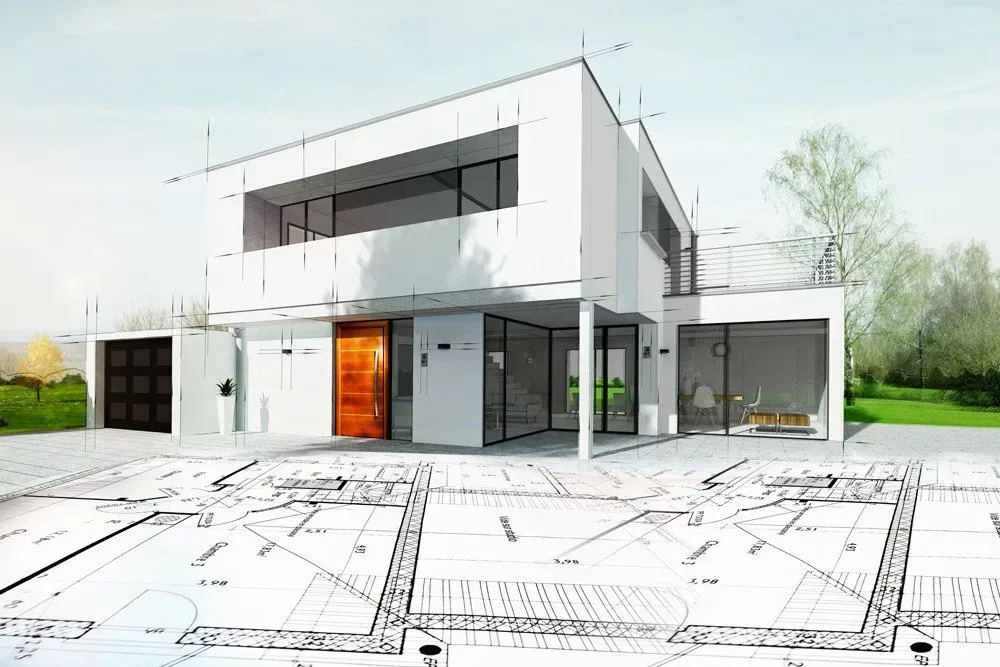Design-build construction is the integration of multiple disciplines of design, engineering, and construction services. It is a team of expert contractors and architectural designers working under a single design and build contract to achieve the same goal – the success of the project. When project owners sit at the same table as those who will make their ambition a reality, great ideas and solutions are created and fully realized.
Read on to learn more about the design-build process and how DRF Builders utilizes it to deliver superior value to our clients.
1. Design-Build Team Selection Stage
The very first stage of design-build construction is the process of a project owner selecting their design-build team. Just like you would when hiring any general contractor to perform a service, owners must review and consider potential design-build contractors based on their experience and ability to understand the needs and budget of the project owner.
Cost is typically an important factor for most owners but should not be the only deciding factor to consider. A shrewd and resourceful owner will see the benefit of working with a qualified and longstanding construction company after reviewing their past projects and their overall experience and skill in the field.
Design-build construction offers value to everyone involved (contractor and owner) as construction firms must contend based on their ability and skill and project owners may anticipate high-quality results throughout the entire project.
2. Pre-Construction Planning Stage
Pre-construction planning typically begins as soon as your design-build team has been selected. During this stage, the design-build team will review and evaluate the constructability of the project as a whole. The design-builder will need to analyze the owner’s goals, budget, potential challenges, and the overall concept of the project. It is also the time for asking as many questions as needed to provide a complete impression of expectations for the finished project.
It is during the pre-construction stage that the members of the design-build team (contractors, architects, engineers, as well as other consultants) will work together to accurately lay out a project’s plan with its ultimate success in mind. A thorough review and assessment of existing structures, utility systems, needed documentation, as well as preliminary design plans, specifications, and schedules that must be determined before work can begin.
With a mindful analysis of a construction site, the design-build team can help facilitate maximum efficiency for the duration of the project.
3. Architectural Design & Functionality Stage
Once a project’s framework has been clearly established, (project timeline, site, budget) the architectural design stage will proceed. As many of these stages often overlap one another, an initial design approach may already have been started during pre-construction planning. Regardless, design-build team members will be working together to develop and advance the best possible project design to balance efficiency and budget for a successful project.
Essentially, the design-build team will estimate and determine where productivity and cost savings can be optimized while still achieving the needed functionality and desired style of the project itself. It is here the overall scope of the project is settled by presenting the owner with plan drawings, cost estimates, and a project schedule.
At this point, if all expectations for a project are set, construction may begin following an agreement. Since all needed members of your design-build team are already working together, no additional contractor or subcontractor bids need to be considered and the project may move forward much sooner than a project using a more traditional construction process.
4. Construction Stage
If initial construction has not begun during the design stage, it will begin immediately following. When utilizing a design-build team, there is likely to be only a single point of contact between the project owner and the construction team – streamlining communication and establishing clear accountability as every member is working together. When all parties are working towards the same goal, any unforeseen concerns or problems can be resolved quickly to allow deadlines to be met. The collaborative nature of design-build construction services provides value engineering by reducing unnecessary costs and keeps change orders to a minimum or even completely nonexistent.
When the right design-build team has been assembled, the entire construction process is much simpler for the project owner, takes less time than traditional methods, and prevents many potential pitfalls.
5. Post-Construction Stage
Once a project has been completed, the design-build team will provide an overview of the project in its entirety, including the project realization, applicable operations & maintenance, and documented procedures throughout the project timeline. Any concerns of the project owner may be addressed and finalization of completed work is established.
When a project is lead by a single construction firm, the post-construction stage is much more efficient and streamlined than when dealing with individual contractors, designers, and architects.
Boise’s Premier Design-Build Construction Company
The bottom line is design-build construction provides an abundance of advantages that more traditional methods cannot – faster project delivery, cost savings, high-quality results, reduced risk, and a singular point of accountability among many others to foster collaboration and teamwork.
For more than 10 years, DRF Builders have been meeting and exceeding the expectations of our clients. If you would like to learn more about the incredible benefits of a design-build team and connect with architectural experts regarding your next construction project, please call or contact us online today!




